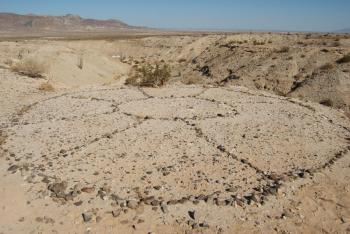
By Miriam Raftery
June 30, 2013 (Sacramento) – A measure to require that developers consult with Native American tribes before initiating projects that affect tribal sacred sites and cultural resources has unanimously passed the state Assembly by a 56-0 vote. The bill now heads to the State Senate.
The approval of AB 52, authored by Mike Gatto (D-Los Angeles), came despite opposition from the California Chamber of Commerce, which called the measure a “job killer.”
The bill strengthens consultation standards with tribes under the California Environmental Quality Act (CEQA), including impacts to tribal sites among the environmental impacts that must be weighed. But the bill also contains a provision that could allow tribal concerns to be ignored if any one of a list of other benefits is found to outweigh tribal concerns.
“Native peoples deserve protections for sites that are a part of their ancient heritage,” said Mike Gatto. “Efforts to maintain them must be considered an essential activity in the preservation of our state’s historic resources.”
California is struggling to preserve the last remnants of its Native American past. Earlier this year, thieves stole carvings from an unprotected sacred site on the Volcanic Tableland, north of Bishop, and developers have sought to place everything from dumps to housing developments to granite mines near, or on top of, ancient sacred sites. In Ocotillo, an industrial wind facility was built atop a sacred site despite tribal objections.
“If we don’t do something to address this, future generations will wonder what happened to California’s pre-Columbian heritage,” Gatto said of the issue. “By including tribes in the decision-making process, we will build better relations between cultures and can protect and preserve California’s unique cultural heritage.”
Currently, tribes are not treated as coherent sovereign entities under CEQA, but instead as mere members of the public, even if wishing to express a unified opinion about a site which has been a unique part of the tribe’s heritage for thousands of years.
Efforts to reform CEQA have stalled due partly to objections from environmentalists but also because of concerns by Native Americans that a streamlined CEQA would provide lesser protections for sacred sites.
The California Chamber of Commerce, on its website, explained its opposition earlier this year. The Chamber claimed that the bill “ effectively gives Native American Tribes authority to approve or disapprove all land use projects in the state that they unilaterally determine may impact a tribal reservation, rancheria community or cultural sacred place.”
The practice effect of the measure, if enacted, remains to be seen since the bill has a loophole that would still allow development that adversely impacts Native American sites if the "overriding economic, legal, social, technological, or other benefits outweight the significant effects on the environment" and provided that consultation with tribes has occurred and that "all feasible mitigation and avoidance" measures have been taken.
In the case of some recent energy projects, even tribes that were consulted have comlained that their concerns were ignored by state and federal agencies. Some contend that mitigation measures were mere token appeasements that did not prevent vast destruction of sacred landscapes.
In Ocotillo for instance, towering wind turbines now surround an ancient geoglyph (photo, top) and were erected lands used for thousands of years as sacred burial grounds. The California Native American Heritage Commission declared the site a santified sacred site and found the federal government erred in approving the project.
It is unclear whether AB 52 would prevent a similar scenario.
View text of bill with amendments here: http://legiscan.com/CA/text/AB52








Recent comments